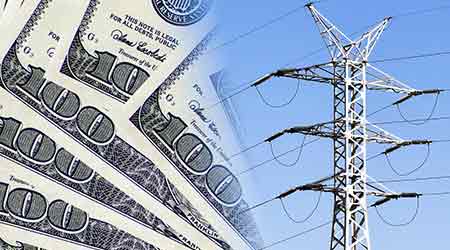Choose Your Own Demand Response: 3 Categories
Choosing your flavor of demand response program depends on what your local utility offers, as well as the technology available in your building.
Most demand response programs fall into one of three general categories. In all cases, participation requires enlisting in a program long before a DR call, and having a utility-owned or certified smart meter whose hourly data is used to calculate load reduction.
1. In an Emergency Response program, customers are called to help cope with an unscheduled condition (e.g., generator outage, transmission line failure, very hot weather). Rewards are for best efforts, with no penalty for failure to respond. Payments may be based on avoided kWh during a defined period, relative to a pre-determined baseline, with the $/kWh price set seasonally. Such rates have varied (by locale and time) between $.20 and $1.50 per avoided kWh.
2. A Capacity Support program entails a commitment to drop load by a pre-determined kW level when called, using a customer’s on-site generation or specific loads (e.g., pumps or fans having variable speed drives) that it commits to drop. Payment is based on availability and a grid-determined $/kW-month (or $/MW-day, depending on the grid) value. The customer gets paid a flat monthly fee proportional to its committed kW, even if never called. Failure to comply, however, may result in a penalty, such as a reduced monthly payment going forward. Multiple failures may result in dismissal from the program.
Prices for committed capacity vary widely. If a large power plant is about to be retired off the grid, for example, near-future capacity pricing may rise. If new generation or expanded transmission is expected (or the economy slows), $/kW-month may drop. It may also vary seasonally, with value rising in summer when load is greatest, and dropping in winter if grid load is lower. Pricing has varied from $3 to over $100 per kW for a year’s commitment (roughly $8 to $270 per MW-day).
Running a customer’s on-site diesel or gas-fired generator under a DR program may require that new (and potentially expensive) equipment be added to the unit to significantly cut nitrous oxide (NOx) emissions. Before promising a CFO that an on-site generator could be used to generate revenue, compare the program’s NOx limit (expressed in pounds or grams per megawatt-hour) to that of the generator. If there’s a big difference, get a quote from the generator manufacturer on the cost of NOx mitigation equipment before telling the boss you’ve discovered a free cash cow.
3. Under an Advance Bidding option, a customer signs up to cut load or run its generator to provide a defined kW cut by offering that capacity to the grid at a customer-chosen $/kW bid. The customer will not be called until the hourly market price approaches or exceeds that bid. In essence, the customer is competing with wholesale generators and other customers in the program. If the bid is too high, a customer won’t be called.
DR programs may also differ widely based on location relative to power transmission and distribution systems. Where power lines are “congested” (i.e., line or transformer capacity is limited relative to local peak demand), additional line relief DR programs may exist.
To find programs available in your area, check with your utility account representative.
Programs, equipment becoming sophisticated
All of the above typically provide at least several hours (possibly up to a day) of notice before a demand reduction must commence, allowing a facility manager time to respond. As building automation and internet controls advance, however, additional DR opportunities are arising.
Utility and grid operators presently perform a variety of unseen functions, the costs of which are built into “ancillary service” charges on electric bills, though not shown as line items. Some of them involve rapid minute-by-minute adjustments in the speed of generators, the routing of power, and running a few generators at low speed to allow rapid ramping up as needed. New DR programs providing such services are being designed that allow customers to participate, if able to respond in 10 minutes or less. Doing so could cut costs to maintain and operate expensive or seldom-used equipment now needed for those tasks.
When automated and web-linked to grid operations, customer variable speed drives and light dimming systems may offer such rapid responses. But soon another technology — on-site power storage — may allow many other customers to participate in new DR programs.
In the last few years, the price for lithium-ion batteries (in dollars per stored kWh) has dropped to a point where, with sufficient government or utility incentives, they may be economical for use in DR and demand limiting programs. Some facilities in California and New York have begun installing large power storage banks charged at night when grid power is cheaper, or during the day if the power is coming from solar panels. A group of 21 buildings in Irvine, Calif., recently initiated a power storage system able to provide 25 percent of their peak demand for several hours, using Tesla Powerpack batteries dispatched by automated load management and optimization software.
Related Topics:














